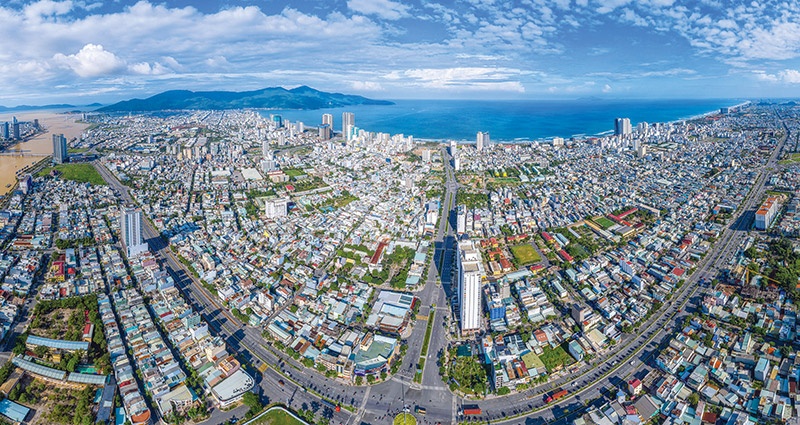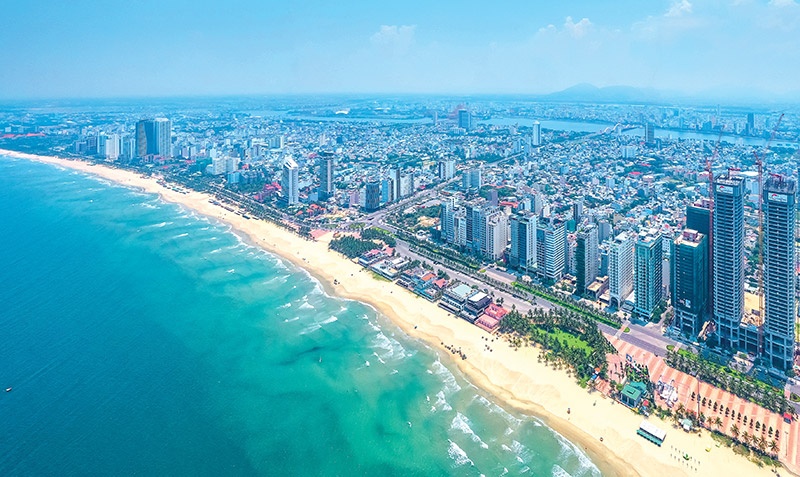Danang pinning hopes on delivery of eco-smart city
 |
| Danang was the first destination in the country to push for smart city status a decade ago |
Three years ago, a sequence of initiatives for the transition towards a smart city in Danang was announced. Resolution No.43-NQ/TW on the construction and development of Danang by 2030, with a vision to 2045, seeks to turn the city into a contemporary smart-eco city that is synchronously linked to smart urban networks in the nation and the ASEAN region.
After that, the National Assembly published a resolution in June 2020 on the piloting of an urban government model and several metropolitan development mechanisms and policies.
Ho Ky Minh, Deputy Chairman of Danang People’s Committee said, “The goal of converting Danang into a smart city is to adapt to worldwide shifts while maintaining sustainable development.”
Since last year, the government has issued a series of documents on Danang’s development planning, including both a decree and official decision in March on approving the adjustment of the city’s master plan by 2030 with a vision to 2045; and a decision on funding the construction of Lien Chieu Port. Plans are also being drafted to upgrade Danang into a regional financial centre, and more besides.
Tran Du Lich, a member of the Prime Minister’s Economic Advisory Group, highlighted the significance of Resolution 43. “The government considers Danang as an urban region with a chain of urban centres including Lang Co, Dien Ban, and Hoi An. The city is not a tiny strip of land but a large and promising territory.”
In the Digital Transformation Project in the city until 2025, with a vision towards 2030 issued by Danang People’s Committee, digital transformation is identified as the key to solving the city’s bottlenecks and opening up fresh prospects.
 |
| FPT City Danang Urban Area is one of the newest smart city startup projects. It is expected to become a green, smart, and contemporary urban region developed by FPT Danang Urban JSC, with a total size of more than 180 hectares |
Smarter applications
The initiative has generated positive results in digitalising management, admin, and provision of public services. In the process of constructing a smart city, Danang has received worldwide recognition, including the 2019 ASOCIO Smart City Award from the Asia-Oceania Computing Industry Organisation, and the Vietnam Smart City Award for both 2020 and 2021.
Prior to the issuing of Resolution 43, the metropolis had taken specific measures to prepare for the construction of a smart city.
For instance, an e-government architecture model has been embraced since 2010. Danang was the first urban area in Vietnam that sought to become a smart city in 2012 after signing a collaboration agreement with IBM. The group then transferred the agreement to the domestic telecom giant Viettel.
In 2014, the city also implemented the e-government information system and began piloting a variety of smart applications in the domains of transportation, environment, healthcare, education, food safety, and travel. Four years later, it announced the Smart City Architecture framework encompassing six pillars and 16 priority areas.
“Danang is finishing a number of master plans and policies to submit to competent authorities for consideration and approval,” said Le Trung Chinh, Chairman of Danang People’s Committee.
Primed for advancement
In addition, the city proposed the establishment of regional-scale financial and start-up innovation centres as well as a non-tariff zone. It also fosters the implementation of key projects such as Lien Chieu Port, Danang University, and the expansion of the T1 terminal at Danang International Airport.
Chairman Chinh highlighted, “These actions provide a strong foundation for Danang to achieve its goal of becoming a smart city and a hub for startup innovation by 2045.”
According to Tran Dinh Thien, former director of the Vietnam Institute of Economics, from a macro viewpoint, structural adjustments are necessary to assure the city’s green and sustainable growth while maintaining its position as the finest metropolis to both reside in and invest in.
“Danang should strive to utilise the specific mechanism approved by the National Assembly in 2020. Simultaneously, the city should take strong measures to lure investment and construct urban infrastructure commensurate with the aforementioned advantages,” Thien said.
One factor that cannot be ignored is human resources. Danang prioritises developing manpower to gain competitive advantages in attracting investment and boosting a smart economy.
“It all starts with the people,” asserted Nguyen Tam Tien, general director of Trung Nam JSC.
The Vietnam-based private corporation develops a multi-industry ecosystem with several areas of activity, including energy, infrastructure and construction, real estate, and technology.
Tien suggested, “To prepare for breakthrough outcomes, Danang should increase the connections between training institutions and businesses, support university research centres, enhance the infrastructure of educational institutions, and form partnerships with universities in developed nations.”
The metropolis is also a training centre for the Central Highlands, with a workforce of worldwide calibre employed in the tourist, service, industrial, and technological industries.
What the stars mean:
★ Poor ★ ★ Promising ★★★ Good ★★★★ Very good ★★★★★ Exceptional
Related Contents
Latest News
More News
- CME Solar strengthens position in Vietnamese renewables (December 30, 2025 | 11:21)
- Self-care signals shift towards sustainable healthcare (December 30, 2025 | 10:12)
- GreenYellow marks five years of clean energy growth in Vietnam (December 26, 2025 | 15:51)
- TCP Group partner with VNUS to launch water conservation project (December 25, 2025 | 14:00)
- Heavy industries set for pilot greenhouse gas quotas (December 25, 2025 | 10:00)
- Swedfund invests in MSME growth and climate action in Vietnam (December 19, 2025 | 11:42)
- GreenYellow brings solar energy to light up remote schools in Tuyen Quang province (December 19, 2025 | 08:00)
- Charge+, Grab partner to develop EV charging network in Vietnam (December 18, 2025 | 17:11)
- Linking sci-tech and innovation to Vietnam’s net-zero future (December 18, 2025 | 14:31)
- Driving double-digit growth through green and circular transformation in Vietnam (December 17, 2025 | 09:00)

 Tag:
Tag:




















 Mobile Version
Mobile Version